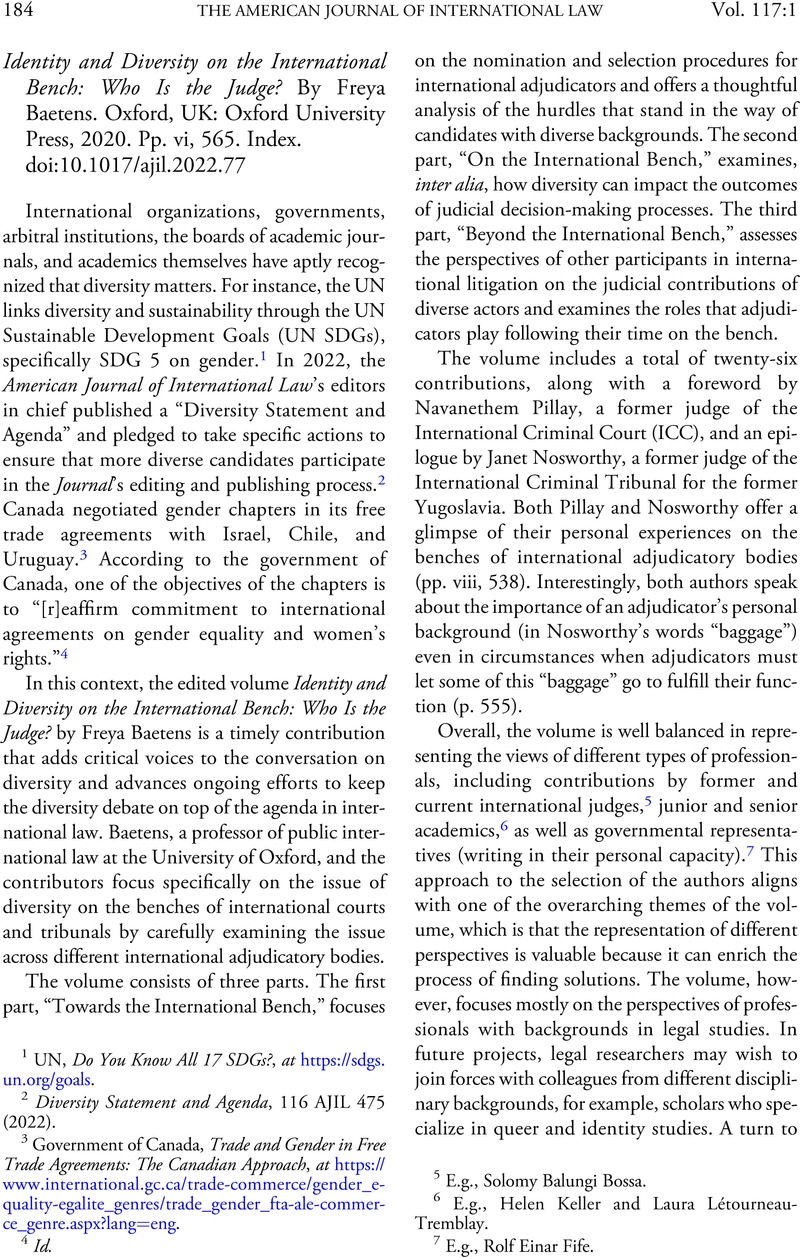No CrossRef data available.
Article contents
Identity and Diversity on the International Bench: Who Is the Judge? By Freya Baetens. Oxford, UK: Oxford University Press, 2020. Pp. vi, 565. Index.
Review products
Published online by Cambridge University Press: 25 January 2023
Abstract

- Type
- Book Reviews
- Information
- Copyright
- Copyright © The Author(s), 2023. Published by Cambridge University Press for The American Society of International Law
References
1 UN, Do You Know All 17 SDGs?, at https://sdgs.un.org/goals.
2 Diversity Statement and Agenda, 116 AJIL 475 (2022).
3 Government of Canada, Trade and Gender in Free Trade Agreements: The Canadian Approach, at https://www.international.gc.ca/trade-commerce/gender_equality-egalite_genres/trade_gender_fta-ale-commerce_genre.aspx?lang=eng.
4 Id.
5 E.g., Solomy Balungi Bossa.
6 E.g., Helen Keller and Laura Létourneau-Tremblay.
7 E.g., Rolf Einar Fife.
8 Shaffer, Gregory & Ginsburg, Tom, The Empirical Turn in International Legal Scholarship, 106 AJIL 1 (2012)CrossRefGoogle Scholar.
9 UN, SDG 5, at https://sdgs.un.org/goals/goal5.
10 An Interview with Gabrielle Kirk McDonald: The Ad Hoc Tribunals Oral History Project by International Center for Ethics, Justice and Public Life, Brandeis University, at 9–11, 39 (2016), at https://www.brandeis.edu/ethics/international-justice/oral-history/interviews/mcdonald-gabrielle-kirk.html.
11 Polonskaya, Ksenia, Diversity in the Investor-State Arbitration: Intersectionality Must Be a Part of the Conversation, 19 Melb. J. Int'l L. 259 (2018)Google Scholar.
12 Tulkens, Françoise, More Women – But Which Women? A Reply to Stéphanie Hennette Vauchez, 26 Eur. J. Int'l L. 223, 226 (2015)CrossRefGoogle Scholar.


